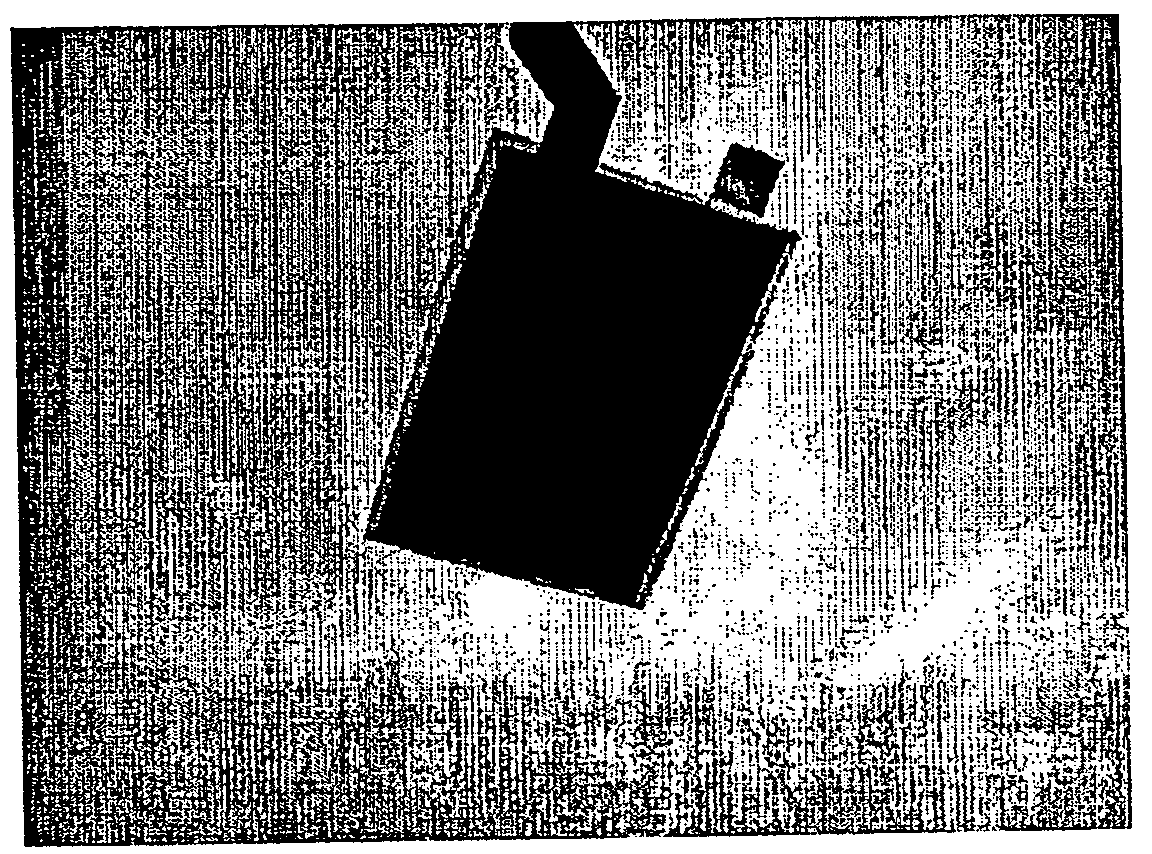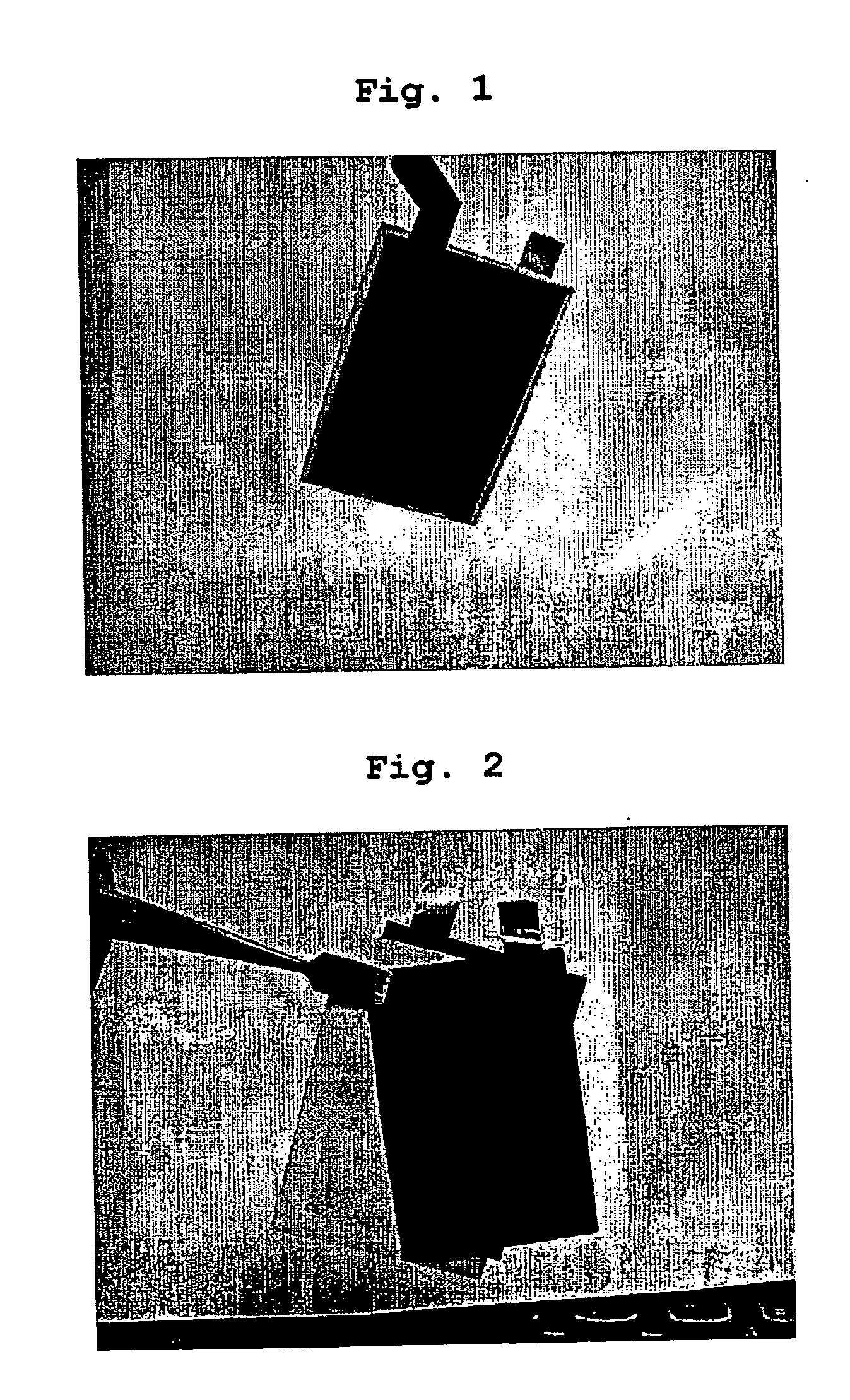Surface-treated microporous membrane and electrochemical device prepared thereby
a microporous membrane and electrochemical technology, applied in the field of surface-treated microporous membrane and electrochemical device prepared thereby, can solve the problems of poor adhesion and separation, degradation of battery quality, drop in battery safety, etc., to prevent peeling and breakage, improve adhesion to other substrates, and excellent mechanical strength
- Summary
- Abstract
- Description
- Claims
- Application Information
AI Technical Summary
Benefits of technology
Problems solved by technology
Method used
Image
Examples
example 1
1-1. Manufacture of Organic / Inorganic Composite Porous Film Coated with SBR
[0064]PVdF-HFP copolymer (polyvinylidene fluoride-hexafluoropropylene copolymer) was added to tetrahydrofuran (THF) in the amount of about 5 wt % and dissolved therein at 50° C. for about 12 hours or more to form a polymer solution. To the polymer solution obtained as described above, barium titanate (BaTiO3) powder was added to the concentration of 20 wt % on the solid content basis, so as to be dispersed in the polymer solution. By doing so, a mixed solution (BaTiO3 / PVdF-HFP=70 / 30 (weight percent ratio)) was obtained. Then, the mixed solution obtained as described above was coated on a porous polyethylene terephthalate substrate (porosity: 80%) having a thickness of about 20 μm by using a dip coating process to a coating layer thickness of about 2 μm. After measuring with a porosimeter, the active layer infiltrated into and coated on the porous polyethylene terephthalate substrate had a pore size of 0.4 μm ...
experimental example 1
[0073]Evaluation for Binding Capability and Adhesion
[0074]The following test was performed to evaluate the binding capability and adhesion of the organic / inorganic composite porous film coated with SBR according to the present invention.
[0075]1-1. Evaluation for Adhesion to Other Substrates
[0076]Each of the organic / inorganic composite porous films according to Example 1 and Comparative Example 1 was laminated with an electrode, and adhesion between the film and the electrode was evaluated.
[0077]After the evaluation, the organic / inorganic composite porous film coated with styrene-butadiene rubber according to the present invention (BaTiO3 / PVdF-HFP) showed excellent adhesion to an electrode (see FIG. 1), while the organic / inorganic composite porous film according to Comparative Example 1 showed poor adhesion (see FIG. 2).
[0078]1-2. Evaluation for Binding Capability
[0079]Each of the organic / inorganic composite porous films according to Example 1 and Comparative Example 1 was used as a ...
PUM
| Property | Measurement | Unit |
|---|---|---|
| Tg | aaaaa | aaaaa |
| thickness | aaaaa | aaaaa |
| dielectric constant | aaaaa | aaaaa |
Abstract
Description
Claims
Application Information
 Login to View More
Login to View More - R&D
- Intellectual Property
- Life Sciences
- Materials
- Tech Scout
- Unparalleled Data Quality
- Higher Quality Content
- 60% Fewer Hallucinations
Browse by: Latest US Patents, China's latest patents, Technical Efficacy Thesaurus, Application Domain, Technology Topic, Popular Technical Reports.
© 2025 PatSnap. All rights reserved.Legal|Privacy policy|Modern Slavery Act Transparency Statement|Sitemap|About US| Contact US: help@patsnap.com



